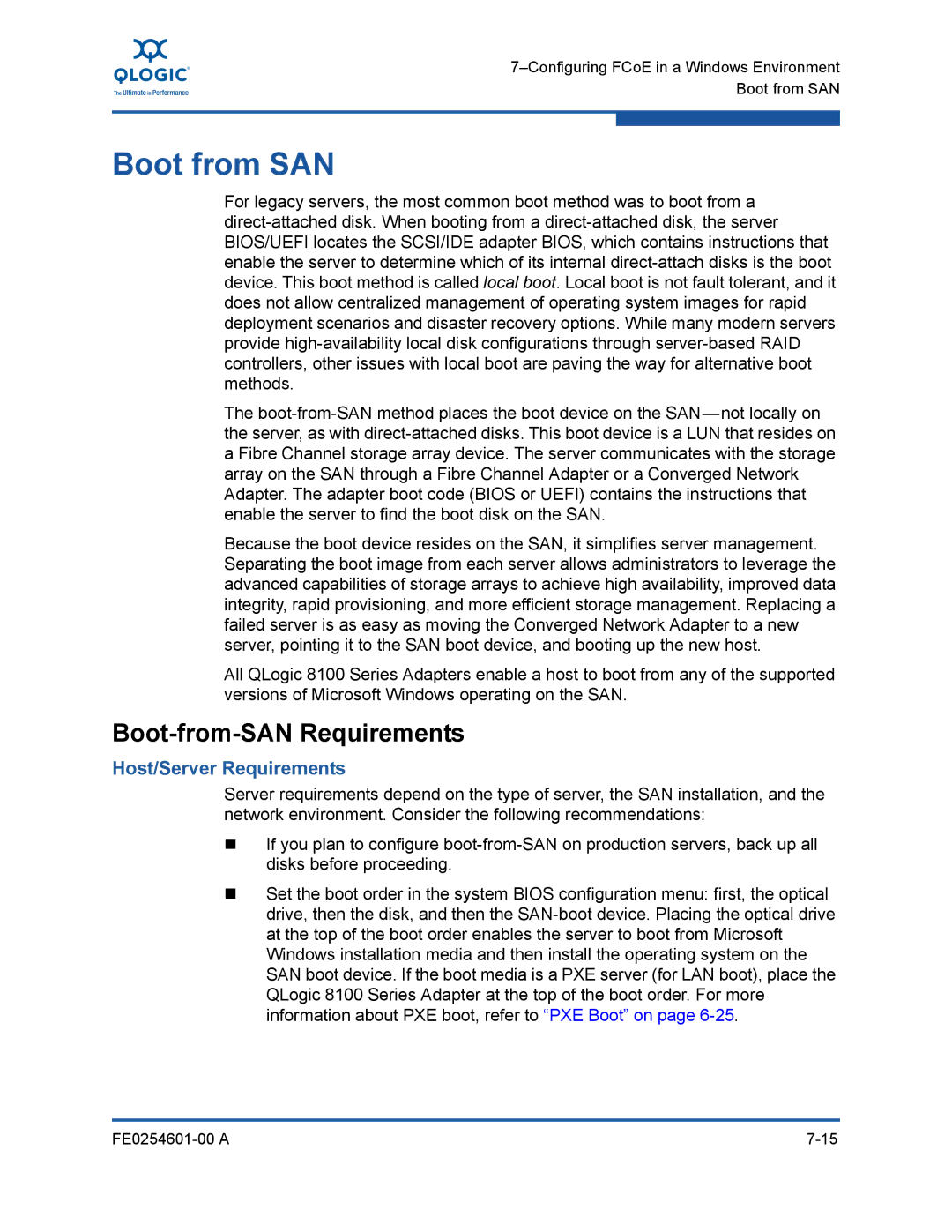
Boot from SAN
For legacy servers, the most common boot method was to boot from a
The
Because the boot device resides on the SAN, it simplifies server management. Separating the boot image from each server allows administrators to leverage the advanced capabilities of storage arrays to achieve high availability, improved data integrity, rapid provisioning, and more efficient storage management. Replacing a failed server is as easy as moving the Converged Network Adapter to a new server, pointing it to the SAN boot device, and booting up the new host.
All QLogic 8100 Series Adapters enable a host to boot from any of the supported versions of Microsoft Windows operating on the SAN.
Boot-from-SAN Requirements
Host/Server Requirements
Server requirements depend on the type of server, the SAN installation, and the network environment. Consider the following recommendations:
If you plan to configure
Set the boot order in the system BIOS configuration menu: first, the optical drive, then the disk, and then the
|
